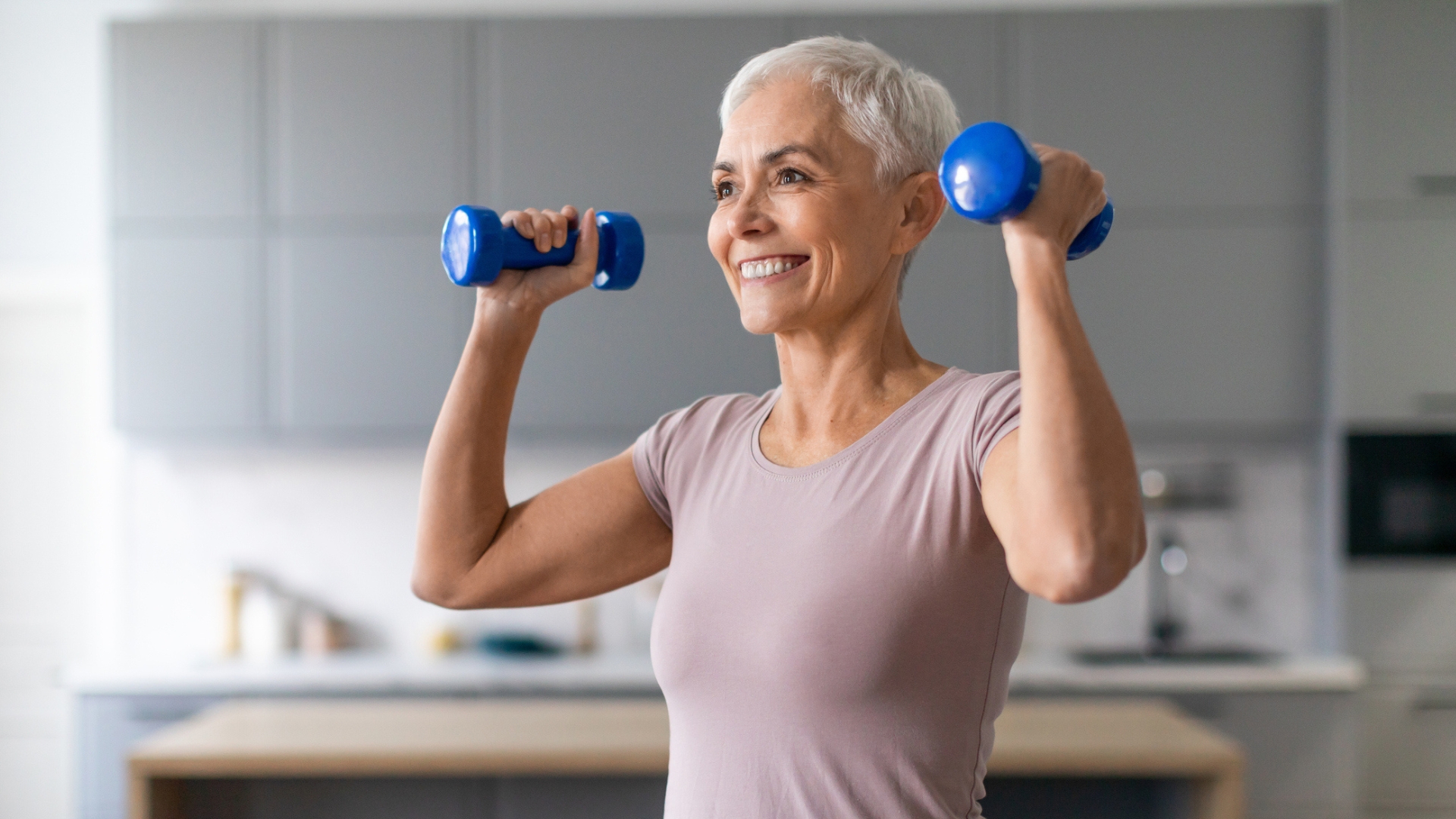If you’re struggling with menopausal weight gain despite not changing your diet or exercise routine, you’re not alone. Many of my personal training clients have recently voiced the same frustration.
To understand what’s happening—and what women can do about it—I spoke to menopause expert, certified personal trainer and founder of the Owning Your Menopause app Kate Rowe-Ham.
“As estrogen drops, it impacts how you store fat, especially around your middle. You also naturally lose muscle, which slows metabolism.
“But it’s not just hormones. Common menopause symptoms like poor sleep, anxiety and hot flushes can raise cortisol—your stress hormone—which tells your body to hang onto fat, particularly around your belly.
“So even if nothing’s changed in your routine, everything has changed inside your body. It’s not your fault. It’s time to shift how you support your body through this phase, with strength, nourishment and rest.”
Rowe-Ham has created a five-move strength training workout to “build a body that supports us through every stage of life”. Here’s how to do it.
How to do the menopause strength workout
The moves:
- Squat
- Push press
- Toe taps
- Cossack squat
- Bent-over row
All you need for this workout are light and medium sets of dumbbells. Rowe-Ham recommends 5-8kg but choose weights to suit your fitness level.
Perform 12-14 repetitions in round one, 10-12 repetitions in round two and 8-10 repetitions in round three. Go lighter with your weights on the last two rounds and do the toe taps for 30 seconds.
“I chose these moves as they offer a way to train the whole body and include functional movement that is key as we navigate midlife and beyond,” says Rowe-Ham.
“We want to look at exercise as a way of staying independent for as long as possible and being able to carry out day-to-day tasks with confidence.”
Why is strength training important during perimenopause and menopause?
“For women in midlife and beyond, strength training isn’t just about maintaining or losing weight. It’s about building a body that supports us through every stage of life,” says Rowe-Ham.
“As we age and our estrogen declines, so does our muscle mass and bone density. That decline can lead to weakness, instability and a higher risk of falls and fractures without intervention.
“But strength training gives us back that control. It’s one of the most powerful tools to future-proof our bodies. It helps us stay independent, energetic and capable.
“For women navigating perimenopause, menopause and postmenopause, it also supports better hormone balance, metabolism and mental well-being.
“I’ve seen firsthand how transformative it can be in my clients and in my own journey. It’s never too late to start.
“And it’s not just about lifting weights in a gym. Strength can be built at home with bodyweight, resistance bands or even carrying your shopping with intention.
“When we train for strength, we’re not just changing our bodies, we’re changing how we move through the world.”




